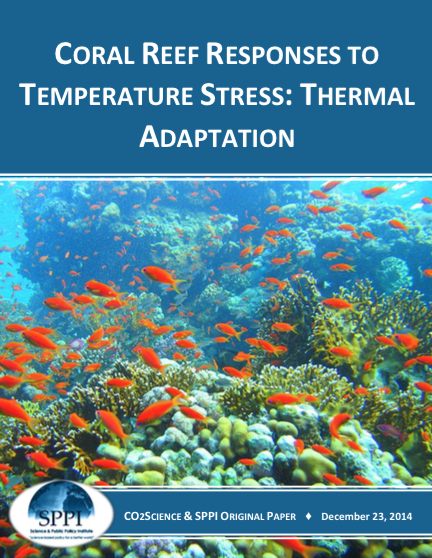News / Science & Technology
Coral Reef Responses to Temperature Stress: Thermal Adaptation

As living entities, corals are not only acted upon by the various elements of their environment,they also react or respond to them. And when changes in environmental factors pose a challenge to their continued existence, they sometimes take major defensive or adaptive actions to insure their survival. A simple but pertinent example of one form of this phenomenon is thermal adaptation, which feature has been observed by several researchers to operate in corals in response to the stress of high temperature. This summary presents a review of such scientists’ work, demonstrating that predictions of vast coral demise due to global warming are unlikely to occur.
Fang et al. (1997)1 experimented with samples of Acropora grandis taken from the hot water outlet of a nuclear power plant near Nanwan Bay, Taiwan. In 1988, the year the power plant began full operation, the coral samples were completely bleached within two days of exposure to a temperature of 33°C. Two years later, however, “samples taken from the same area did not even start bleaching until six days after exposure to 33°C temperatures,” thus illustrating their ability to thermally adapt.
Middlebrook et al. (2008)2 reported similar findings. They collected multiple upward-growing branch tips of the reef-building coral Acropora aspera from three large colonies at the southern end of Australia’s Great Barrier Reef and placed them on racks immersed in running seawater within four 750-liter tanks maintained at the mean local ambient temperature (27°C) and exposed to natural reef-flat summer daily light levels. Then, two weeks before a simulated bleaching event where water temperature was raised to a value of 34°C for six days—they boosted the water temperature in one of the tanks to 31°C for 48 hours, and in another tank they boosted it to 31°C for 48 hours one week before the simulated bleaching event. In the third tank they had no pre-heating treatment, and in the fourth tank they used no pre-heating nor any simulated bleaching event. And at different points throughout the study, they measured photosystem II efficiency, xanthophyll and chlorophyll a concentrations, and Symbiodinium densities.
Read More
